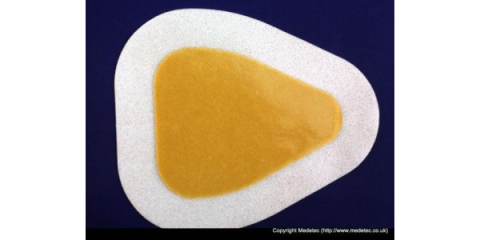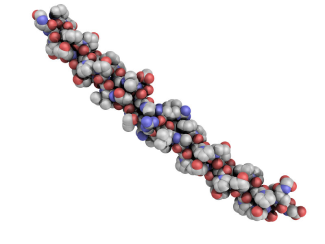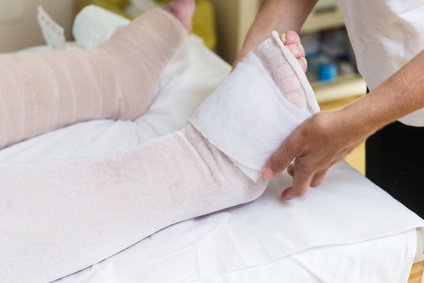What is a Hydrocolloid Dressing?
March 3, 2016
Hydrocolloid dressings provide a moist and insulating healing environment which protects uninfected wounds while allowing the body's own enzymes to help heal wounds. These dressings are unique because they don't have to be changed as often as some other wound dressings and are easy to apply. Hydrocolloid dressings:
- Contain gel-forming agents inside a wafer of dressing
- Have a waterproof backing, often made of polyurethane
- Are available in a variety of shapes and thicknesses
- Come with or without an adhesive border
- Are made especially for difficult-to-dress wound areas such as elbows and heels
When are Hydrocolloid Dressings Appropriate?
These wound dressings are helpful for use on wounds that are:
- Clean and uninfected
- Free of dirt or other debris
- Dry with little to no drainage
- Medium thickness
Because these dressings are flexible and water-resistant, they also make an excellent protective layer for recently healed wounds, or for partly healed wounds with granulation tissue that needs protection from surface trauma. Furthermore, a hydrocolloid dressing can mold around the wound and provide insulation so that the body doesn't need to use as much energy to heal the wound.
How to Apply Hydrocolloid Dressings
Applying a hydrocolloid dressing is similar to the best practices for most wound care. Follow these steps:
- Wash hands and put gloves on.
- Remove and discard any previous dressing, noting the date applied.
- Remove and discard gloves, wash hands and put on new gloves.
- Clean wound with saline or wound cleanser.
- Pat wound dry with clean gauze.
- Remove and discard gloves, wash hands and put on new gloves.
- Apply a moisture barrier to periwound skin. On deeper wounds, pack with wound filler as prescribed.
- Choose a hydrocolloid dressing which is 1-2 inches larger than wound.
- Hold hydrocolloid dressing between hands to warm it so that it adheres better. Remove backing from hydrocolloid dressing.
- Fold dressing in half. Apply dressing from the center of the wound outward.
- Smooth dressing from the center outward. Hold to improve the adhesion. Apply tape if dressing does not have adhesive, or to further secure the dressing.
- Throw away waste, remove gloves and discard them.
Removing a Hydrocolloid Dressing
Follow these procedures to remove a hydrocolloid dressing from a wound:
- Press down on the skin near the edge of the dressing and lift up the adhesive on one side.
- Continue to lift around the edges of the dressing until all the adhesive is free.
- Carefully peel the dressing back from the wound in the direction of hair growth.
- If a new dressing is required, reapply using the steps above.
Dressing Change Frequency
Generally, hydrocolloid dressings last from 3 to 7 days. Sometimes a hydrocolloid dressing starts coming up at the edges earlier. If so, it needs to be changed earlier. Because they keep the wound moist and protected, the wound does not need to be cleaned daily. In fact, wounds covered by hydrocolloid dressings will heal faster if they are not regularly exposed to air.
However, because a wound covered with hydrocolloid dressings is not easy to check, it is important to use this type of dressing only on wounds which are completely clean and absent of infection.
Benefits of Hydrocolloid Dressings
Hydrocolloid dressings lasts longer than most types of dressing, so it needs to be applied less frequently. They are easy to apply to the wound and come in a variety of shapes and sizes for different types of wounds. Hydrocolloid dressing can also be used with venous compression. In addition, they can often promote faster healing because they:
- Provide a moist environment which allows body enzymes to help heal
- Are impermeable to bacteria and other contamination
- Do not stick to the wound
- Are flexible to mold around skin and body motions
Disadvantages of Hydrocolloid Dressings
These types of dressings are not appropriate for all wounds and should not be used if there is heavy exudate or infection. Other disadvantages include:
- It can be difficult to assess the wound through the bandage
- Bandages might curl or roll on edges
- Sometimes dressing adheres to the wound and causes trauma to the fragile skin when removed
- Dressings can cause periwound maceration or hypergranulation of wound
Using Hydrocolloid Dressings on Patients with Diabetes
Generally, hydrocolloid dressings should be used very cautiously on individuals with diabetes, especially on foot wounds. Only use on diabetic feet if:
- There has been a thorough patient assessment
- The wound is only superficial and there is no sign of infection
- There is low to moderate exudate
- There are no signs of ischemia
- The dressing is changed frequently
To view hydrocolloid dressings products, click here.
Image Credit: Medetec (www.medetec.co.uk)
The views and opinions expressed in this blog are solely those of the author, and do not represent the views of WoundSource, HMP Global, its affiliates, or subsidiary companies.












Follow WoundSource
Tweets by WoundSource